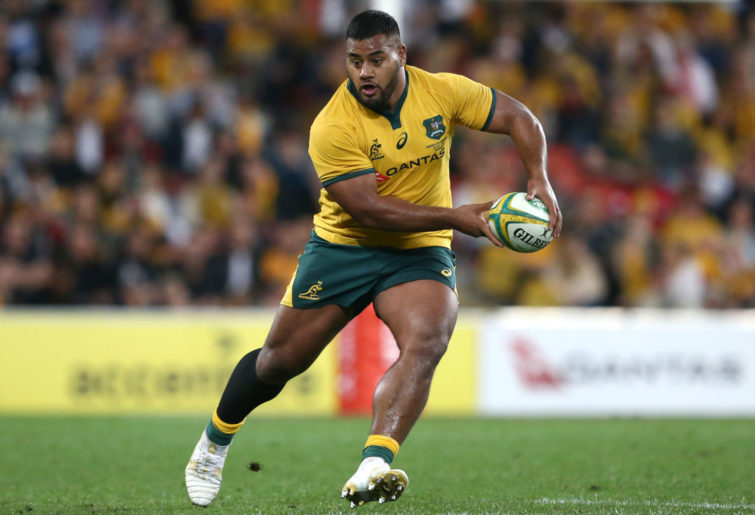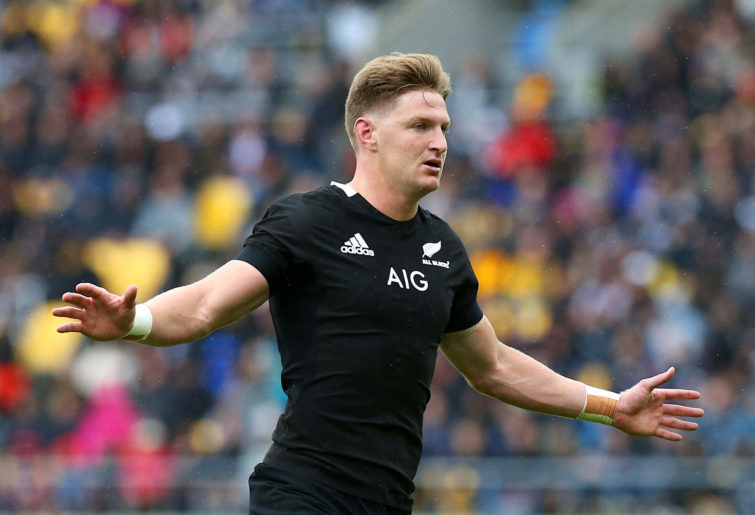Following on from that enthralling Bledisloe Cup fixture was a range of emotions.
No one is ever truly happy with a draw, but this particular match ended with such an energetic, all-over-the-shop finish, peppered with so much good in between, that it’s hard not to feel quite positive about the Wallabies’ prospects.
Not content with the feeling alone, I had a look at the statistics to see just how well the game shaped from both perspectives as a precursor for what we can look forward to next week.
Things the Wallabies did well
The Wallabies did a great job at limiting the run metres for the New Zealand backs. To keep Damian McKenzie and Jordie Barrett to just six runs apiece is a great effort, but for Rieko Ioane and Goodhue Jack to manage just four each and George Bridge to notch just three is a massive reason why the All Blacks were contained to just two tries.
On top of that, it was the manner in which the Australians defended. Ball-and-all tackles and extra cover meant that only one starting All Black (Ardie Savea) was able to manage more than two tackle busts. Similarly, this smother technique meant that McKenzie was the only back outside Richie Mo’unga who was able to get an offload away. Just the singular one, too.
The Wallabies, in contrast, averaged over ten runs each in the starting backline. Of particular impressiveness was Filipo Daugunu, who notched one try, 15 runs, 130 metres, one clean break, three defenders beaten and two offloads in his first Test match. Incredible numbers for a tried-and-true player, let alone a man on debut.
Again, showing why he was impossible to overlook, Nic White lead the charge for a lot of the match with 83 passes, one try assist, nine runs, 49 metres, one clean break, six defenders beaten and two offloads to really get the Wallabies on the front foot in attack.
Another key highlight was how many runs the tight forwards managed. This really set the foundation for attack and drew in a lot of defenders. Taniela Tupou (nine runs, 11 metres), Allan Alaalatoa (eight runs, eight metres), Lukhan Salakaia-Loto (11 runs, 17 metres), Harry Wilson (12 runs, 29 metres) and Matt Philip (13 runs, 36 metres) all got through a mountain of work and those hard-earned metres paved the way for some great service to backs when the ruck was being well-secured.
The other part that stood out was the ability to keep the ball alive. Eleven offloads to the All Blacks’ five was a nice touch. Even though the percentage of offloads evens out when you consider the possession statistics, it shows a willingness to play with the ball and keep it moving even in dreadful conditions for attacking rugby.

Nic White. (Photo by Hagen Hopkins/Getty Images)
Things the Wallabies didn’t do well
While the encounter as a whole should be seen as a massive improvement from our last match, Dave Rennie and the Wallabies will be hitting the blackboard and training field with things to tweak and change.
The set-piece, which was lauded as an advantage pre-match, ended up being a source of struggle at times.
While New Zealand boasted 4/4 scrums and 13/15 lineouts (86 per cent efficiency) for a very handy return, Australia managed just 4/6 scrums and 10/13 lineouts (76 per cent), which gifted a lot of opportunities to the men in black.
Not only are the numbers lower, but it was a Wallabies lineout at the end of the first half which nearly lead to a Rieko Ioane try, and it was an All Blacks lineout early in the second that spawned Aaron Smith’s five-pointer. The way in which Australia regroup so they can use the lineout as an attacking platform and also defuse the All Blacks’ lineout is paramount to our success.
A penalty count of 14-7 in favour of New Zealand will also make for bleak review. The number of times one-off runners were caught in rucks and had the ball turned over or penalised was a particular issue and one that needs addressing pronto.
Particular offenders of this were Matt To’omua (three turnovers as well as 6/9 tackles) and Tupou (two penalties conceded, two short-arms conceded and 2/4 tackles). These two players had great games outside of this, but will want to tidy these aspects up so as to improve the Wallabies’ chances.

Taniela Tupou. (Photo by Jono Searle/Getty Images)
Monitoring the opponents
Despite the amount of possession Australia had (61 per cent possession, 153 runs for 525 metres), the All Blacks still looked the more damaging side when they had the ball. While New Zealand didn’t have as much of it, they still managed to make 483 metres from just 91 runs.
To break that down, they ran 5.3 metres per run compared to 3.4 for the Wallabies. The All Blacks also managed two more clean breaks despite running with the ball 60 fewer times.
The next note is their defence. The All Blacks were clinical given the barrage of damaging runners the Wallabies sent down their channels. Australia’s best defender (Pete Samu with 10/10 attempts) paled compared to the 16/16 from Joe Moody up front, the 15/16 from Goodhue in the backline and the Herculean 25/25 from Sam Cane across the park.
Inflating the matter is that their bench comes on and performs just as efficiently. The All Blacks bench made a combined 36/38 tackles, meaning that even when Australia bring fresh legs on, there is still a solid wall of defence to punch through.
The bench as a whole was actually a comparison many made pre-match as to what would be a death-knell for the Wallabies, but our finishers came on to contribute 23/25 tackle attempts to their credit, too. The bigger difference is how well the New Zealand finishers attack. Twenty-five runs for 99 metres (more than half of them from Caleb Clarke) easily outdid the 17 runs and 26 metres from the Australian bench.
Lastly, the All Blacks were stifled somewhat by the conditions and somewhat by the pressure, but they’re rarely contained that well two matches in a row.
Savea, Mo’unga and Barrett are all particularly fine operators on offence and even with a strong defensive showing, these three still proved a handful as evidenced by their attacking statistics. Much like the rest of their team, they will be itching for…

Jordie Barrett. (Photo by Hagen Hopkins/Getty Images)
The bounceback
The All Blacks do tremendously well the week after they don’t win. Such is the strength of their culture that they feel a requirement to immediately atone for not securing a victory for the fans, for the coaches and for themselves.
Against the Wallabies, this is no different. The last five times the Wallabies have either beaten or drawn with the All Blacks, they have been bitten back in the next encounter with unbridled ferocity.
Three of those following encounters occurred at Eden Park, the location of our next fixture.
From what will endearingly be referred to as the bounceback, New Zealand have avenged their loss or draw with an aggregate score of 128-33 across the last three such fixtures in Auckland (51-20, 41-13 and 36-0).
That’s scoring, on average, virtually four times as many points as the Wallabies. The closest Australia came in this recent scenario was when they lost by 28.
This is clearly a different side. However, it is still a concern that has already been identified and the severity of which shouldn’t be overlooked.
Rennie’s Wallabies looked fantastic in the 16-16 draw in Wellington, but they will need that, and then some, to stamp their mark in the most impenetrable stadium in the world for travelling teams.
Plenty of hope has been instilled into fans after that performance. The task ahead seems statistically insurmountable, but that’s what makes the impending challenge all the more exciting.
Go you good things!































































































